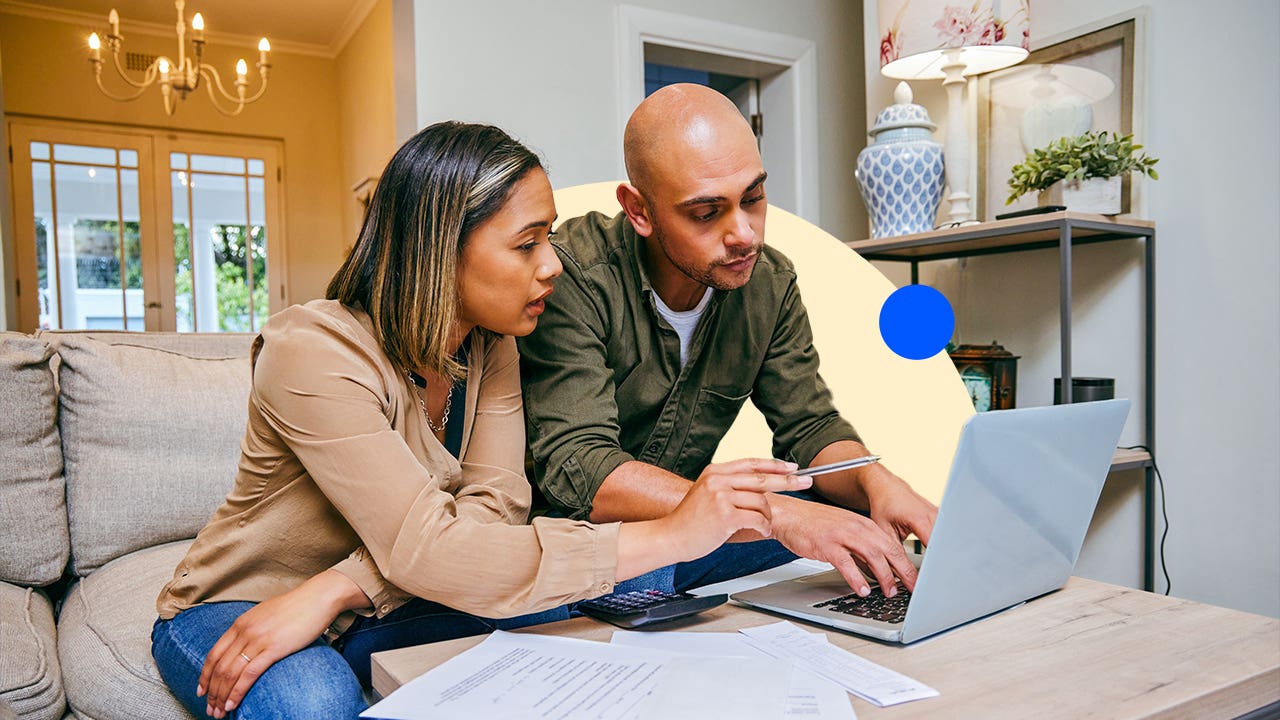What documentation is required for personal loans?

The Bankrate promise
At Bankrate we strive to help you make smarter financial decisions. While we adhere to strict , this post may contain references to products from our partners. Here's an explanation for .
Key takeaways
- When applying for a personal loan, you must provide personal and financial information, including proof of identity, income and address.
- Lenders generally request information about your credit score, loan purpose and monthly expenses to determine your eligibility and loan terms.
- Gathering all necessary documents and information before you apply for a personal loan may help you get your funds faster.
When you apply for a personal loan, lenders request several documents to verify your personal and financial information before they approve your request. Some lenders set unique application and eligibility requirements, but most will ask for similar paperwork.
Knowing which documents you need and having them ready before you apply may increase your chances for approval so you receive your funds more quickly.
What do I need to apply for a personal loan?
After you start the initial application process, lenders require documents to verify all the information you provided. This usually includes proof of your personal details to confirm your identity and financial information. Typically, most of the paperwork can be submitted electronically through a portal on the lender’s website.
1. Application form
All lenders require you to fill out an application form to be approved for a loan. If you’re borrowing from an online lender, the process is done entirely online. If you apply for a personal loan with your local bank or credit union, you may be able to fill out the application with a bank representative in person.
The application will likely look slightly different from one lender to another, but will usually ask for information such as:
- Your full name.
- Contact information.
- Address history.
- Date of birth.
- Social Security number.
You’ll need to choose a loan amount, answer questions about the purpose of your loan and provide financial details about your monthly income, bills and debt obligations.
2. Proof of identity
Lenders must be able to verify your identity to approve your loan. Two forms of identification are usually required, and acceptable documents may include your:
- Birth certificate.
- Certificate of citizenship.
- Driver’s license.
- Military ID.
- Passport.
- Social Security card.
- State-issued ID.
The lender needs to be able to read your identification, so make sure to take a clear picture with your smartphone or use a scanner to avoid delays.
3. Employer and income verification
Unsecured personal loans rely mostly on your income to determine how much you qualify for. Because lenders don’t require you to put up collateral to back the loan, you must prove you have a steady stream of verifiable income to be approved.
If you are traditionally employed, you can verify your income with a few documents, including:
- Pay stubs.
- Tax returns.
- W-2s and 1099s.
- Bank statements.
- Employer’s contact information.
If you’re self-employed, you may need any or all of the following documents:
- Bank statements.
- 1099s for the past two years.
- Tax returns for the past two years.
If you work for a regular employer, you should be able to access your pay stubs and tax forms through your payroll provider’s online database. You can also contact your human resources or payroll department. For the self-employed, you may need to work with your CPA or other tax professional, they might be able to help you provide the required tax forms.
4. Proof of address
You’ll also need proof of your current address and how long you’ve lived there. You may not qualify if you’ve moved around a lot or just relocated to a new area. While some lenders may require specific documentation, you can usually use one of the following:
- Utility bill.
- Lease or rental agreement.
- Mortgage statement.
- Proof of insurance on your home or vehicle.
- Voter registration card.
- Property tax receipt.
- Bank or credit card statement.
If you need a change of address confirmation, the U.S. Postal Service offers resources to help you confirm a change of residential address. While the fastest and easiest way to do this is online, you can also go to your local post office and complete a form in person.
Other information lenders use to approve your loan
Once you apply, lenders will consider several factors when approving your loan and determining what rate to offer you.
-
The higher your credit score, the better your APR and terms will be. Lenders offer higher loan amounts and longer repayment terms to consumers who have managed their credit well. You may need to accept a shorter term at a higher rate or lower loan amount if you have bad credit.
Most lenders offer a prequalification process that doesn’t ding your credit score. However, to finalize your approval, the lender will do a hard pull of your credit score, which will affect your credit. -
Personal loan lenders have very few restrictions on how you use your loan funds. Money from a personal loan can be used to cover the cost of home improvements and upgrades, medical expenses, adoption costs, wedding fees, travel or some other big-ticket purchase.
Some lenders offer special programs for debt consolidation, while others offer major APR discounts if you choose a personal loan secured by your car or home. If you apply for a secured personal loan, you’ll also need to provide information about the asset you plan to offer as collateral, such as a car or art collection. -
Lenders will review your credit report to calculate how much of your monthly income is being used to pay for recurring monthly expenses such as car, credit card and mortgage or rent payments. They divide your total monthly debt including your new personal loan payment by your before-tax income to calculate your debt-to-income (DTI) ratio. If it’s too high, they may approve you for a lower loan amount or deny your application altogether.
What if you don’t get approved for your loan?
If you get denied for a personal loan, you can take a few steps to improve your odds with the next application.
Get a co-signer
A co-signer — usually a family member or friend — also assumes legal responsibility for your loan by signing on when you apply. Adding a co-signer who meets the eligibility requirements may increase your approval odds or help you qualify for a higher loan amount.
Remember, your co-signer’s credit will be affected if you miss a payment or default on the loan.
Choose a secured personal loan
Secured personal loans are backed by collateral like a boat, car, home or RV. You’ll need to provide paperwork showing proof of ownership and the lender will need to determine what the asset is worth to lend on it.
By applying for a secured personal loan, you can reduce the lender’s risk and increase your approval chances because the lender can seize your asset if you can’t repay your loan. You may even get a lower interest rate, which could give you a lower payment to help you qualify for a higher loan amount.
Work on your credit score
If you don’t qualify now for a personal loan and don’t need the funds urgently, consider working on your credit score. Paying down your credit card balances is one of the best ways you can boost your score quickly. It lowers your credit utilization ratio, which is a major factor in how high your credit score is.
Once your score improves, you’ll increase your odds of being approved.
Consider a credit card
A credit card is designed for small, everyday expenses, so it may not be the best choice if you need to cover a large expense. However, for common projects that are under $1,000, a credit card may be a better option. The applications require similar documents and information, and finding a credit card that fits your needs may be easier.
How to get a personal loan
Getting a personal loan is relatively easy. However, you can quickly improve your odds of getting the amount you want by following a few simple steps.
- Decide how much you need, including fees. It’s best to add an extra 10 percent to the amount you need to cover potential origination costs, especially if you need a specific dollar amount. For example, if you need $1,000 cash, add an extra $100 (10 percent) to your requested loan amount. If the lender’s fees are lower, you can always reduce the amount before you sign. It’s easier to borrow less after you’re approved than to borrow more.
- Know the lender requirements. Minimum credit scores, loan amount ranges, APRs and repayment terms vary between lenders. Take time to peruse the lender’s website so you don’t waste time applying to a lender that doesn’t offer personal loan terms for your plans.
- Shop around several lenders. Get prequalified with at least three different personal loan lenders. Check out your local bank or credit union and ask if it offers discounts for banking with them. Review all the terms to ensure you understand your monthly payment and any fees charged.
- Apply and submit your paperwork. Once you choose a lender, complete the online application and upload any necessary documentation. The lender will run your credit and may adjust your prequalification terms if your credit score or income is lower than you stated on your application.
- Review and sign your paperwork and receive your funds. Once you’re fully approved, the lender will send you final documents to sign with all the repayment details. You’ll typically need to give the lender your banking information to have the loan funds deposited directly into your account. Most personal loan lenders can fund your loan within one business day of application.
The bottom line
Gathering the information and documents you’ll need before applying for a personal loan can save you time and avoid potential funding delays. Make sure all your paperwork is legible and provide documents as quickly as possible to speed up the process. Remember, not all lenders have the same requirements, so make sure you know the general documentation criteria before applying. By being prepared, you can increase your chances of approval and receive your funds more quickly.
Related Articles



